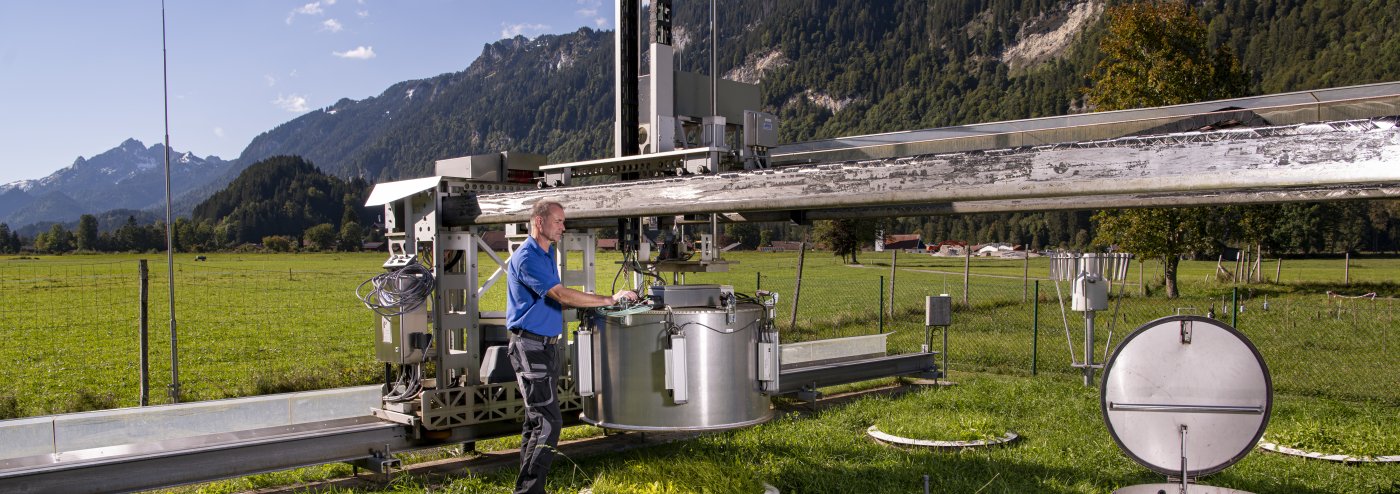
lookKIT 4-24 Graswang: Collecting Data for Climate Research
We need data to assess the environmental conditions future generations will face and how ecosystems will react to these conditions: For example, data is gathered on parameters such as temperature precipitation, the exchange of greenhouse gases, and on their interactions.
Researcher Dr. Rainer Gasche works on the practical aspects of such questions. He oversees the technical implementation of measurement stations located in a pre-alpine observatory operated by KIT in Southern Germany near KIT’s Campus Alpine. Graswang, Fendt, and Rottenbuch are the stations where he and his team devise measuring setups
and make sure that the flow of data to the Institute of Meteorology and Climate Research Atmospheric Environmental Research (IMKIFU) stays steady. The stations are located at different altitudes ranging from 600 to 900 meters and vary in annual temperature up to 2.5 degrees. “This allows us to directly compare the climate conditions and relieves us of establishing time series models over years in a socalled space-for-time substitution,” says Gasche. Moreover, parts of the experimental areas are mowed and fertilized to simulate both intensive and extensive farming in the Alpine foothills.
Weather data such as temperature and solar radiation are recorded here 24/7. The researchersalso operate eddy covariance stations to record turbulences, so-called “eddies”,
and the associated exchange of energy, water vapor, and CO2. Another technique, called Cosmic Ray Neutron Sensing, measures moisture in the ground using neutrons
“reflected” by the soil. The team also samples individual soil cores with their vegetation cover at the stations and places them in “lysimeters” (large intact soil monoliths) in
other experimental plots at lower altitude. With that the lysimeters are exposed to higher temperatures, i.e., climate change conditions, and sensors record all parameters of
water balance.
The researchers rely on this data when calculating future scenarios. “We use processoriented modeling to incorporate as many influencing factors as possible,” says Gasche.
The sites are also part of the “Tereno” (Terrestrial Environmental Observatories) project, which links data from many Helmholtz centers. “Tereno has been collecting data for almost 15 years now,” adds Gasche. “This is only possible thanks to the commitment of the Helmholtz Association to fundamental research.”